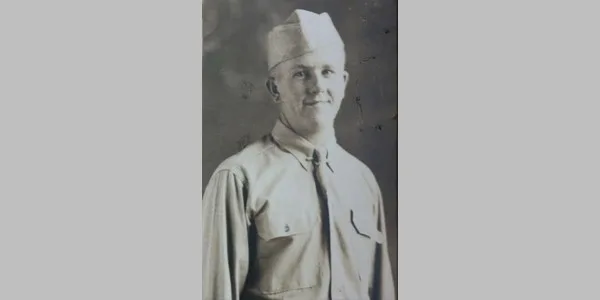
The remains of a U.S. solider who died in Normandy during the D-Day invasion in World War II have been identified as a man from Gravette, Arkansas.
According to a press release October 2 by the Defense POW/MIA Accounting Agency (DPAA), then-19-year-old U.S. Army Private Rodger D. Andrews, was accounted for on June 5, 2024.
Private Andrews was assigned to Company C, 37th Engineer Combat Battalion in June of 1944 to join U.S. forces in the European Theater during World War II.
During Operation OVERLORD, British, Canadian, and American forces stormed the beaches of Normand, France. Engineers like Andrews were sent to the beach code-named “Omaha” to clear German defenses, obstacles, and mines, and then establish exit roads off the beach for the invading ground troops and armored vehicles. Company C’s heroism paved the way for the first troops to move off the beach and and push on into the fortified German positions further inland.
Private Andrews cause of death is unclear due to the chaos of the battle. His remains were not identified even after Allied forces secured Omaha Beach.
American Graves Registration Command (AGRC) searched for and recovered fallen American personnel in the European Theater and began searching for missing American personnel in the Normandy area in 1946.
The AGRC teams recovered many “Unknowns” from Omaha Beach, including a set of remains designated X-48 St. Laurent (X-48). X-48 was found to be wearing a belt with the initials “R.D.A.,” which potentially associated the remains to Andrews, but due to servicemembers often trading clothing and physical similarities between X-48 and other missing servicemembers, the AGRC was unable to identify the remains. X-48 was interred as an Unknown on December 11, 1948, in the U.S. Military Cemetery St. Laurent, or better known today as the Normandy American Cemetery.
In December 2014, DPAA received a request from the Andrews family to devote more time to locating their loved one. Historians reviewed other Omaha Beach losses and the circumstances of Private Andrews’ death, in addition to clothing items the Unknown were wearing that could have been issues to a member of a unit much like the 37th Engineer Combat Battalion. After diligent review of historical and scientific comparisons between personnel data of MIA servicemembers from Omaha Beach, the Department of Defense and American battle Monuments Commission teams exhumed X-48 in March 2019 and transferred the remains to the DPAA Laboratory for analysis.
DPAA scientists used anthropological, dental, and other circumstantial evidence to finally identify Andrews’ remains. In addition, scientists from the Armed Forces Medical Examiner System used mitochondrial DNA (mtDNA) and mitochondrial genome (mtG) analysis.
A rosette will be placed by Andrews’ name on the Walls of Missing at Normandy American Cemetery to signify that he has been acounted for and a burial will be determined on a later date.
To view Private Rodger D. Andrews’ personnel profile, click here.
WebReadyTM Powered by WireReady® NSI










